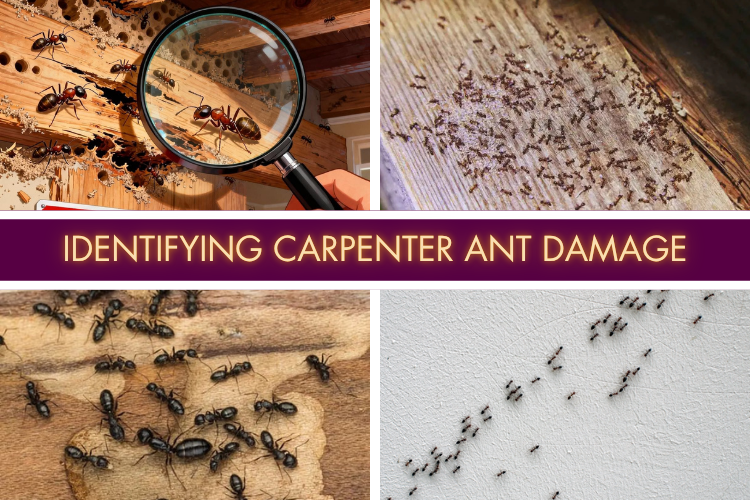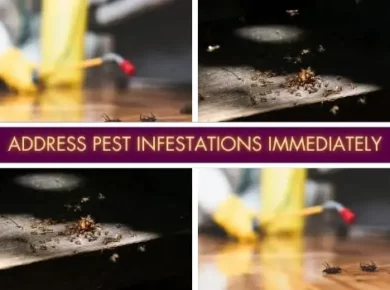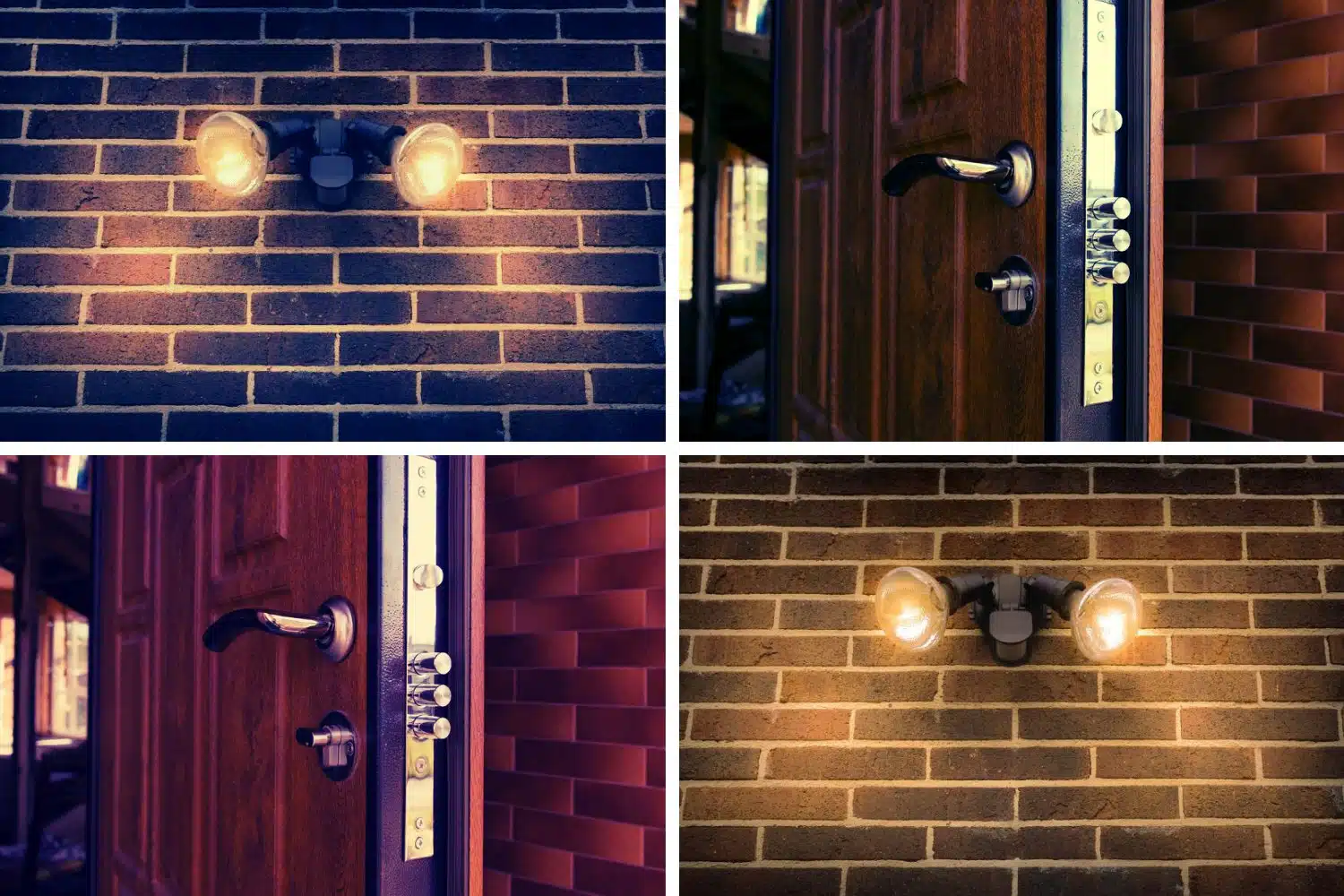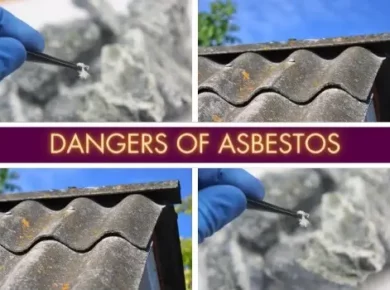If you’re a homeowner, spotting carpenter ant damage early can save you a lot of trouble and money. These ants are sneaky. They don’t eat wood like termites, but they dig through it to build their nests, slowly weakening the structure of your home. The longer they go unnoticed, the more damage they can cause. That’s why it’s important to catch the signs early, before things get worse. In this guide, you’ll learn how to identify carpenter ant activity and what to watch out for, so you can step in before the problem spreads.
What are Carpenter Ants?
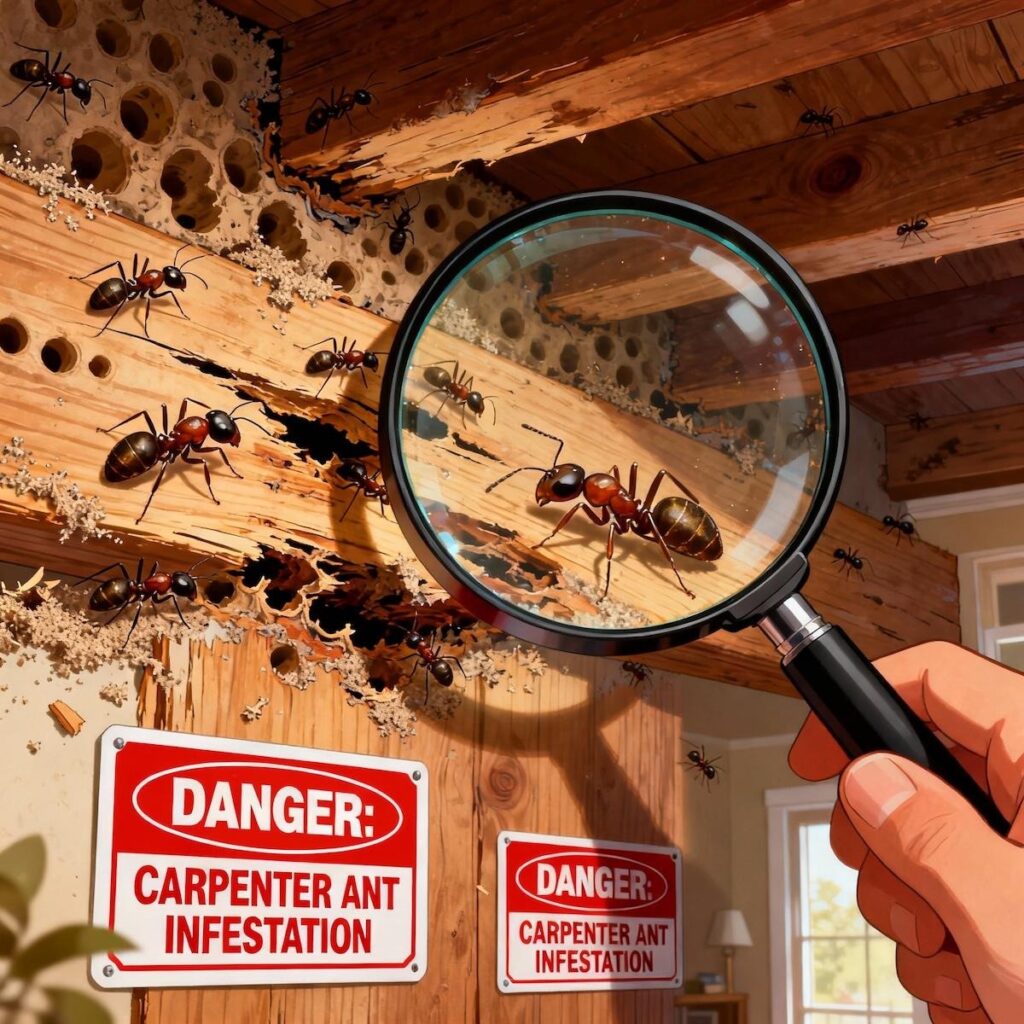
Carpenter ants are one of the largest and most noticeable ants you’ll come across. They get their name from the way they build their nests by digging into wood, not by eating it. These ants usually have a shiny black or reddish-black body and are larger than regular house ants. You’ll often spot two types: workers and swarmers. Workers are the ones you see hunting for food, while swarmers have wings and are responsible for starting new colonies. A single colony can grow quite large over time, with thousands of ants living and working together.
Carpenter ants prefer to nest in moist, decaying, or damaged wood. That’s why you’ll often find them in places where water leaks or dampness exists. They tunnel through soft wood to create smooth, clean galleries that serve as their living spaces. These nests can be inside walls, doors, or window frames if moisture has softened the wood.
Indicators of Carpenter Ant Infestations
1. Live Ant Sightings (Workers and Swarmers)
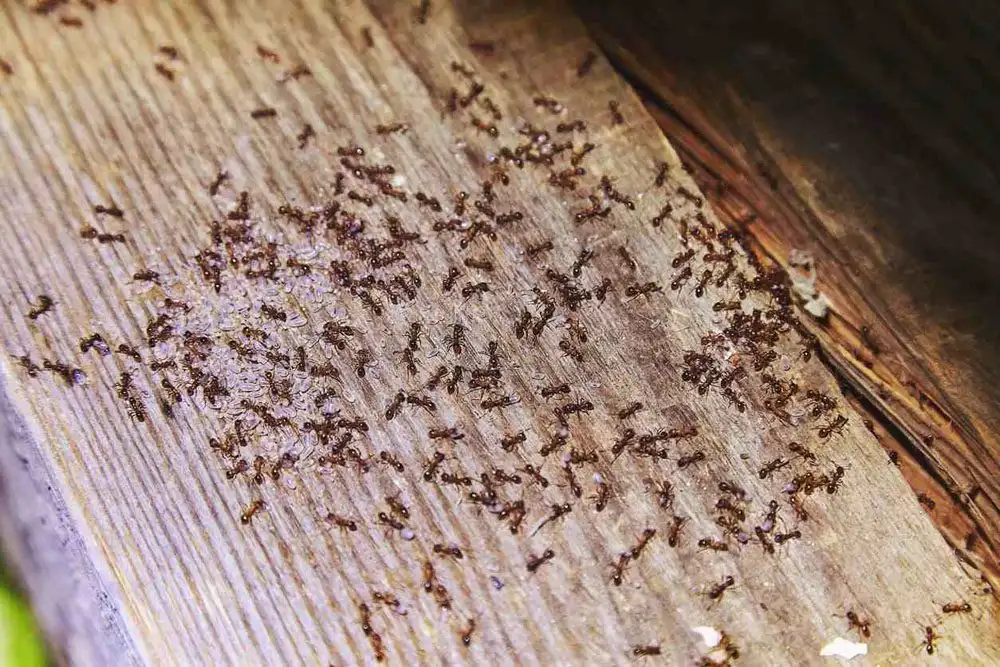
If you start seeing large ants around your home, it’s time to pay attention. Carpenter ants are usually between 0.25 to 0.75 inches long, much bigger than regular household ants. Seeing a few of them now and then might not seem like a big deal, but frequent sightings often point to a nearby colony. Another strong clue is spotting flying carpenter ants. These are swarmers that appear when the colony has matured and is ready to expand. You may also notice trails of ants moving along walls, baseboards, or wooden structures, especially at night when they’re most active.
2. Frass / Wood Shavings / Debris
One of the biggest signs of carpenter ants inside your walls or furniture is the presence of frass. This looks like small piles of sawdust near wooden surfaces or holes. Carpenter ants don’t eat wood; they tunnel through it, leaving behind this fine, powdery debris. Along with wood particles, you might also find bits of insect parts or dirt mixed in. If you notice these small piles collecting around baseboards or window sills, it’s worth investigating further.
3. Rustling or Clicking Sounds Inside Wood
When a carpenter ant colony is active, you might actually hear them. If you press your ear to the wall or wood surfaces and notice faint rustling, scratching, or clicking noises, they could be moving or chewing inside. You can also try gently tapping the surface. If it sounds hollow or oddly soft, there’s a chance ants have hollowed it out from within.
4. Discarded Wings
After their mating flights, carpenter ant swarmers shed their wings. If you find small piles of these wings near windowsills, wall cracks, or other light sources, it’s a strong indication that swarmers have been active indoors. This means the ants have likely established or are in the process of establishing a new colony within your home.
Stages of Infestation and Escalation
Let’s walk through the different stages of infestation so you know what to look out for.
Stage 1: Initial Colony (Minor Signs)

It all starts small. In the beginning, you might not even notice anything unusual. The ants quietly begin to build their colony inside wooden structures or moist areas of your home. You may spot a few wandering ants here and there, but it’s easy to ignore them at this stage. This is the time when quick action can make a big difference and stop things from getting worse.
Stage 2: Visible Frass Accumulation
Now you’ll start seeing frass, which looks like sawdust or fine wood shavings. It usually collects around baseboards, corners, or near wooden furniture. This is a clear sign that the pests are active and chewing through the wood inside your home.
Stage 3: Emergence of Swarmers
At this stage, things get more serious. You may notice winged insects coming out of walls or wooden structures. These are swarmers, and their appearance means the colony is growing. They’re looking to spread and form new nests in other parts of your home.
Stage 4: Structural Damage and Wood Weakening
If the infestation reaches this point, the damage becomes hard to ignore. Wooden beams might feel hollow, floors may sag, and parts of your structure can even become unsafe. At this stage, repairs can be costly, and professional treatment is often the only way forward.
Common Entry & Nesting Locations in Homes
Here are some of the most common spots where carpenter ants get inside and build their nests:
Indoor Nesting Spots:
- Inside hollow wall spaces or unused wall cavities
- Tucked within home insulation where it’s warm and undisturbed
- Behind baseboards or under loose wallpaper where moisture collects
- Inside crawl spaces that stay damp and dark
Outdoor Nesting Areas:
- Tree stumps and rotting logs close to the house
- Soft or decaying sections of wooden decks or fences
- Firewood piles stacked directly on the ground or against the wall
Entry Points to Watch For:
- Gaps or cracks along the foundation of the house
- Openings where pipes or utility lines enter the home
- Loose vents or small spaces under siding that lead indoors
What to Do If You Spot These Warning Signs
If you notice any of these signs, don’t wait around. Here’s what you should do next:
1. Follow the Ant Trails

Watch where the ants are going. These trails can lead you straight to their nesting area. Look closely along walls, baseboards, and near windows.
2. Check for Moisture or Damaged Wood
Carpenter ants love damp, rotting wood. Inspect areas like kitchens, bathrooms, basements, or anywhere there might be leaks or water damage.
3. Call a Pest Inspection Company
Getting help from a professional pest inspection company is one of the smartest steps you can take. They’ll be able to confirm the infestation, check how serious it is, and come up with a solid plan to deal with it.
4. Focus on the Main Nest
Killing the ants you see won’t fix the problem. Make sure the treatment is targeting the main nest deep inside the wood. That’s the only way to fully stop the colony.
5. Keep an Eye Out for Satellite Nests
Carpenter ants often create smaller nests away from the main one. Even after treatment, keep checking for signs in other parts of your home to catch any new activity early.
Frequently Asked Questions (FAQs)
1. Do flying carpenter ants always mean there’s an infestation inside the home?
Not always. Seeing a few flying carpenter ants doesn’t always confirm there’s a nest inside, but it’s a strong sign that you should take seriously. These ants usually show up when they’re looking to start a new colony. If you’re spotting them indoors regularly, it’s a good idea to investigate further.
2. How do I get rid of flying carpenter ants in my home?
To get rid of flying carpenter ants, you need to find where they’re coming from. Look for signs of nesting like wood shavings or damaged wood. Seal off entry points and fix any moisture problems, since damp wood attracts them. Dealing with both the ants and the conditions they love is the best way to stop them from coming back.
3. Can ants spread to other parts of the home if untreated?
Yes, they can. If left alone, carpenter ants may build more nests in different parts of your home. They’re especially attracted to wet or damaged wood. The longer the infestation goes unchecked, the more difficult it becomes to manage. Acting early can prevent bigger issues down the line.
